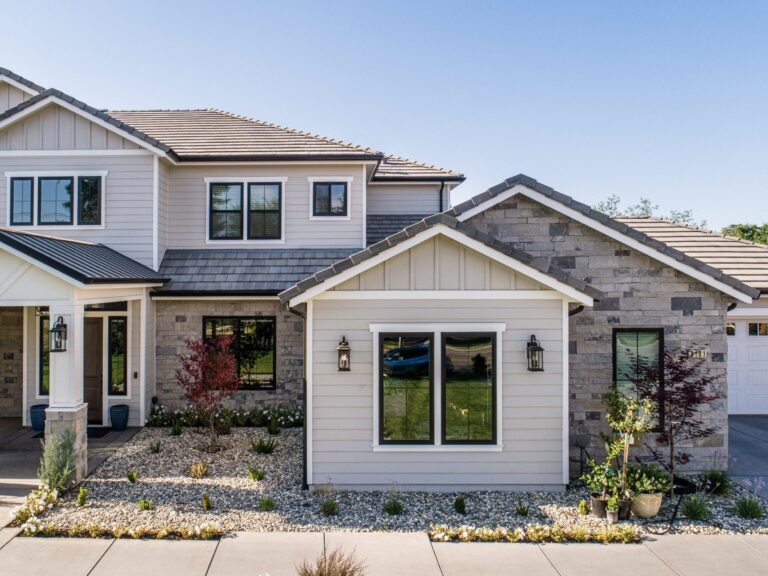When we talk about a house, it’s not just four walls and a roof. Each component adds its distinctive appeal and function, and siding is no exception. An integral part of home design, siding not only safeguards your home but significantly impacts its curb appeal.
Did you know that siding dates back to the Roman Empire? Despite its long history, innovation hasn’t skipped this essential architectural element. Recent years have seen an influx of modern, stylish, and functional siding options. As homeowners prioritize both aesthetics and efficiency, the demand for novel siding solutions has skyrocketed.
In this discussion, we’ll traverse the dynamic world of siding, from the classic options to recent novelties. We’ll explore their benefits, practicalities, and how they’ve revolutionized the housing industry. Be prepared to gain valuable insights that could transform your home and amp up its architectural charm.
Welcome to the future of home design—it’s time to side with innovation.
Traditional Siding Options
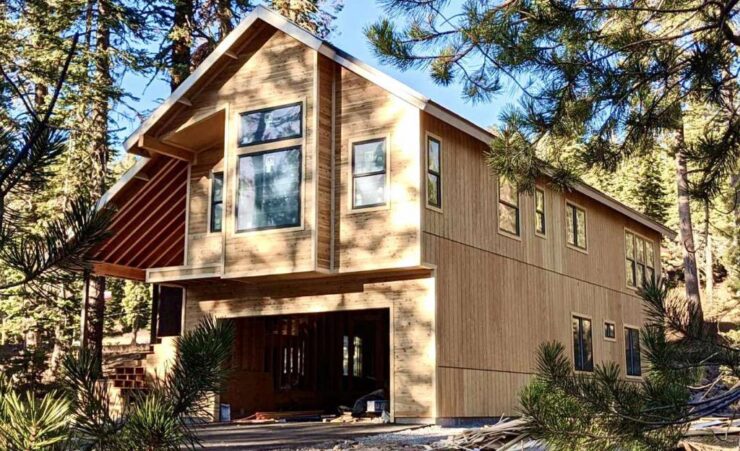
Before we delve into the novel, let’s pay homage to the traditional. These well-established siding options have graced homes for decades, and continue to do so with unrivaled charm.
Wood Siding
Wood has been a steadfast companion in home construction, including siding. It offers unmatched aesthetic appeal with its natural, rustic charm. A well-maintained wood siding lasts for generations, showcasing its durability. Despite the rise of modern alternatives, wood siding’s allure remains steadfast—an architect’s timeless classic.
Vinyl Siding
Vinyl siding, introduced in the late 1950s, rapidly gained popularity for its affordability and low maintenance requirements. Known for its wide variety of color options, it allows homeowners to customize their exteriors. It’s also notably resistant to common nuisances, such as rot and insects—a practical choice for budget-conscious homeowners.
Fiber-Cement Siding
Embracing the best of many worlds, fiber-cement siding offers the appearance of wood, stucco, or masonry at a fraction of the cost. With superior durability, it stands up to weather extremes and requires minimal upkeep. Developed in the 1980s, it quickly gained popularity as a fire-resistant, termite-proof siding option.
Stucco Siding
Dating back to ancient times, stucco siding boasts a history as rich as its texture. Made from cement, lime, and silica, it creates a seamless, weather-resistant exterior that can last up to a century with proper care. It’s particularly popular in Mediterranean and Spanish-style homes, adding an authentic, textured appeal that other sidings can’t quite emulate.
Modern Siding Novelties
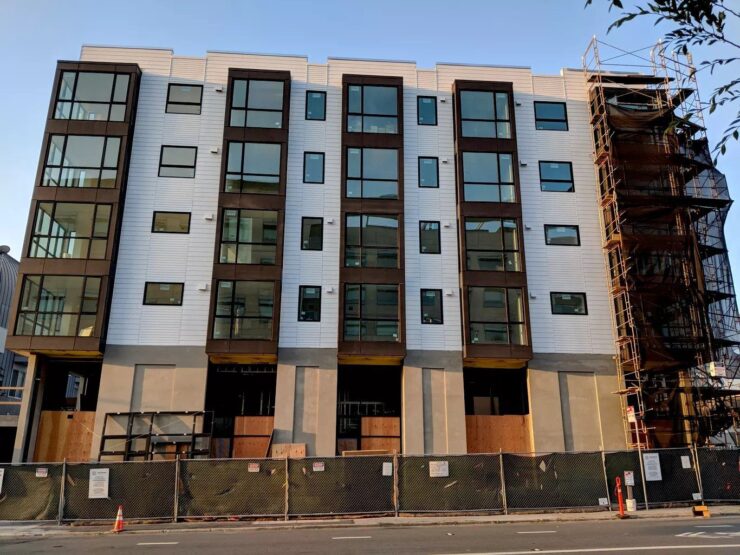
Advancements in technology and material sciences have paved the way for innovative siding options. Let’s venture into these new-age materials that have been redefining architectural norms.
Engineered Wood Siding
As a fusion of traditional charm and modern technology, engineered wood siding is turning heads. It’s a composite material, often made from wood fibers and bonding agents. Engineered wood siding imitates the look of natural wood, but with amplified durability and lesser maintenance demands.
Interestingly, the production process of engineered wood siding offers enhanced dimensional stability. This stability significantly reduces the siding’s susceptibility to changes in temperature and humidity. Plus, with superior resistance to fungal decay and termites, it’s becoming a preferred choice for homeowners looking for a balance between aesthetics, longevity, and ease of maintenance.
Learn more about Engineered Wood Siding here
Steel Siding
Stepping into the world of metals, we encounter steel siding—a powerhouse of durability. Notably, it doesn’t warp, rot, or suffer from insect damage. It’s also fire-resistant, a critical safety feature.
A key attribute of steel siding is its ability to emulate the texture of other materials, including wood. This means homeowners can enjoy the robustness of steel without compromising the aesthetic warmth of wood. Additionally, with advancements in coating technologies, modern steel siding products resist rust and color fading, ensuring a vibrant, long-lasting exterior.
Solar Siding
Solar siding—often termed ‘Building-integrated photovoltaics (BIPV)’—brings a remarkable blend of architecture and renewable energy. Incorporating photovoltaic elements directly into the siding, these systems produce electricity from sunlight.
With solar siding, houses can self-generate a portion of their power, reducing energy bills and the home’s carbon footprint. Furthermore, solar siding elegantly integrates into the exterior design without the pronounced look of traditional solar panels. It’s an embodiment of function meeting form, a paradigm shift towards sustainable architecture.
Smart Siding
The digital revolution has arrived at our homes’ exteriors—welcome to the era of smart siding. These technologically-enhanced materials can monitor your home’s condition and even communicate with other smart devices.
Some smart siding options offer built-in sensors that detect moisture, temperature changes, or impacts, alerting homeowners to potential issues before they escalate. Others can integrate with home automation systems, controlling elements like exterior lighting or security systems. While still a burgeoning field, smart siding represents the cutting-edge intersection of technology and home design—a peek into the future of residential construction.
Eco-Friendly Siding Options
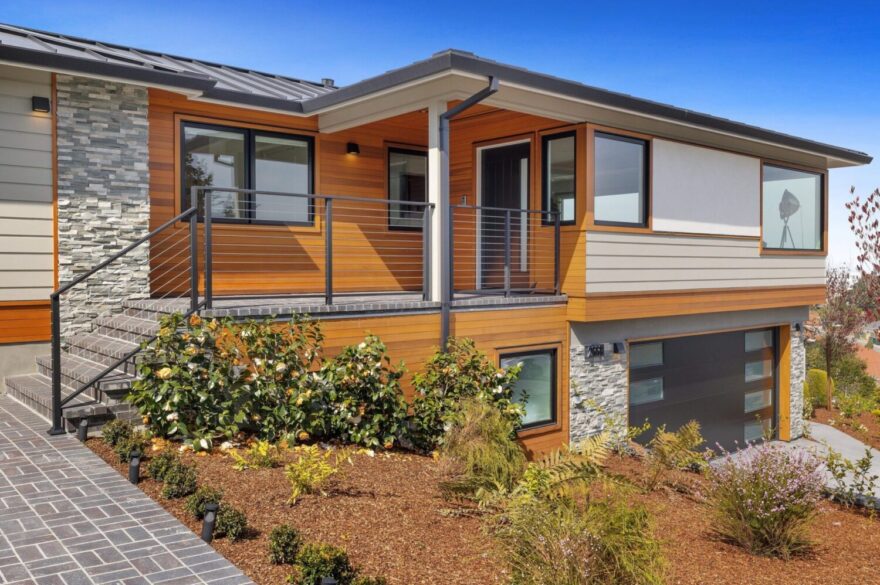
As our environmental awareness intensifies, the demand for sustainable building materials is soaring. Here, we’ll explore eco-friendly siding options that minimize environmental impact without compromising on functionality or aesthetics.
Reclaimed Wood Siding
Reclaimed wood siding capitalizes on wood’s natural longevity, utilizing timbers from old barns, houses, or even railway tracks. Not only does this practice reduce demand for new lumber, but it also gives a second life to high-quality wood, often laden with a rich history. The unique character of reclaimed wood siding—aged knots, nail holes, weathering—offers a captivating rustic aesthetic, bringing authenticity and eco-friendly charm to any home.
Bamboo Siding
Fast-growing and remarkably sturdy, bamboo is an excellent renewable resource for siding. Bamboo siding can mimic the warm appeal of traditional wood while offering impressive resistance to pests and decay. Its rapid growth cycle—maturing in just three to five years, compared to decades for most trees—makes bamboo an exceptionally sustainable choice for conscious homeowners.
Recycled Metal Siding
Opting for recycled metal siding not only conserves natural resources but also reduces landfill waste. Typically made from steel or aluminum, these sidings offer the durability and fire resistance of metal, but with an eco-friendly twist. Furthermore, at the end of its life, metal siding can be entirely recycled again, closing the loop on sustainability. Despite its eco-credentials, recycled metal doesn’t skimp on style, offering a sleek, modern aesthetic to contemporary homes.
How to Choose the Best Siding for Your Home
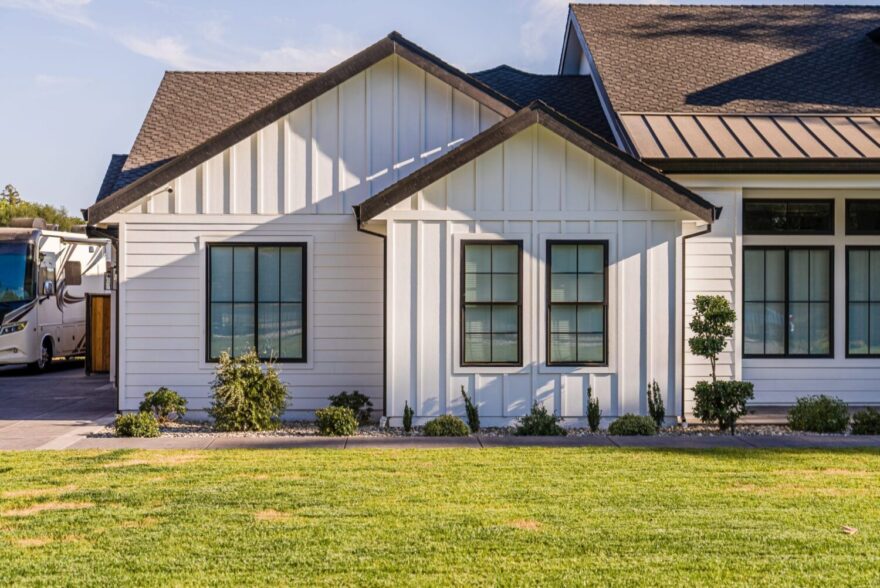
Choosing the right siding is a significant decision—after all, it will cloak your home for years to come. Here’s a handy guide to navigate this crucial selection.
Considerations for Selecting Siding
- Durability: With exposure to weather extremes, durability is a paramount consideration. Siding should withstand your region’s climatic conditions—whether it’s the searing sun, heavy rain, or frosty winters.
- Maintenance: Every siding requires some degree of upkeep. Wood may need periodic painting or staining, while vinyl can usually be cleaned with a simple garden hose. Choose a siding whose maintenance demands align with your lifestyle.
- Cost: Siding varies greatly in cost, from affordable vinyl to more premium options like natural stone. Remember to factor in not only the initial cost, but also long-term maintenance expenses.
Matching Siding with Home Style and Local Climate
Architectural Style: The right siding can enhance your home’s architectural style. For example, stucco suits Mediterranean-style homes, while clapboard siding aligns with Colonial architecture. Embrace siding as a way to accentuate your home’s unique charm.
Climate Resilience: Certain materials weather specific climates better. Fiber-cement siding thrives in humid conditions, while steel siding stands strong in high-wind regions. Align your siding selection with your local climate for optimal performance.
In conclusion, the perfect siding marries practicality with aesthetics. Evaluate all factors, from durability to design, cost to climate resilience. And remember—home is a reflection of yourself. Let your siding choice echo your style, needs, and environmental ethos.
Siding has truly evolved from a mere protective layer to a defining aspect of a home’s personality. As we’ve seen, innovations in material science have brought a plethora of novel options, each offering unique benefits. From solar siding that powers your home to smart siding that integrates with your home automation systems, the future of siding is undeniably exciting.
As homeowners and architects, it’s vital to stay abreast of these advancements, choosing not just for today, but for a sustainable tomorrow. After all, the right siding isn’t just about a beautiful façade—it’s about creating a resilient, efficient, and future-ready home.
Related Posts:
- 20 Best Gaming Headset Under 50$ 2024 - for PC, PS4,…
- Top 10 Best Leather Backpack For Men and Women 2024…
- 15 Best Shoes for Jumping Rope 2024 - Maintain a…
- Top 10 Best Office Chair Under 200 2024 - Ergonomic…
- Top 10 Best Outdoor Basketball Shoes 2024 - Durable…
- Top 10 Best Office Chair Under 100 2024 - Cheap,…

